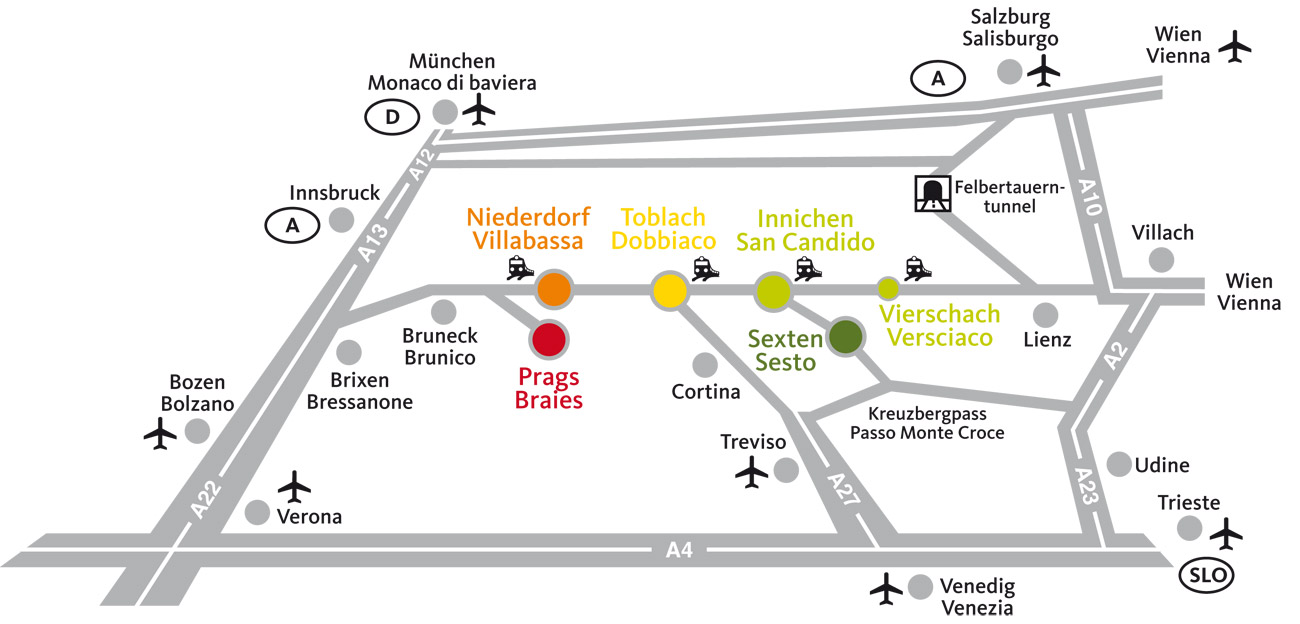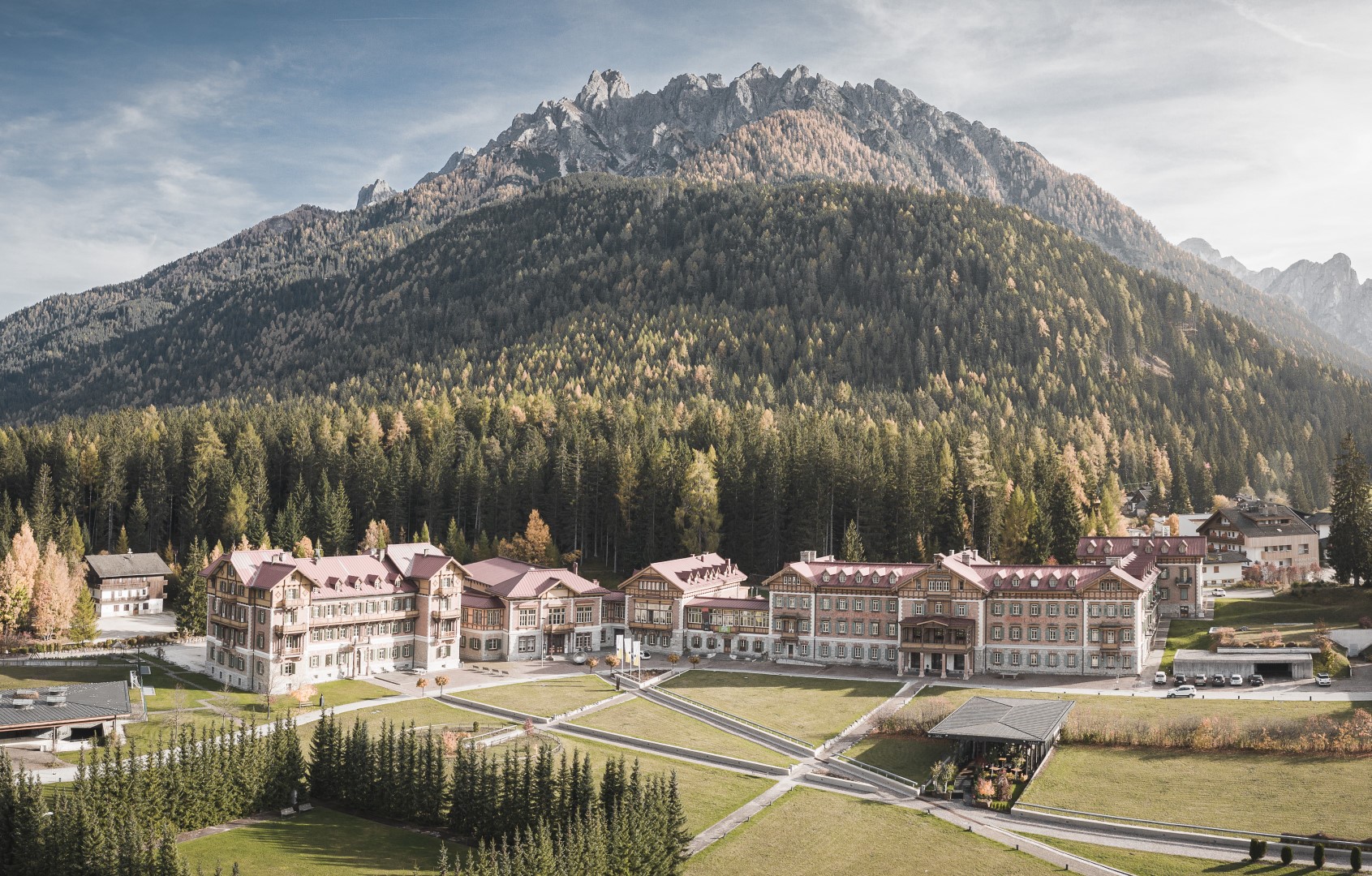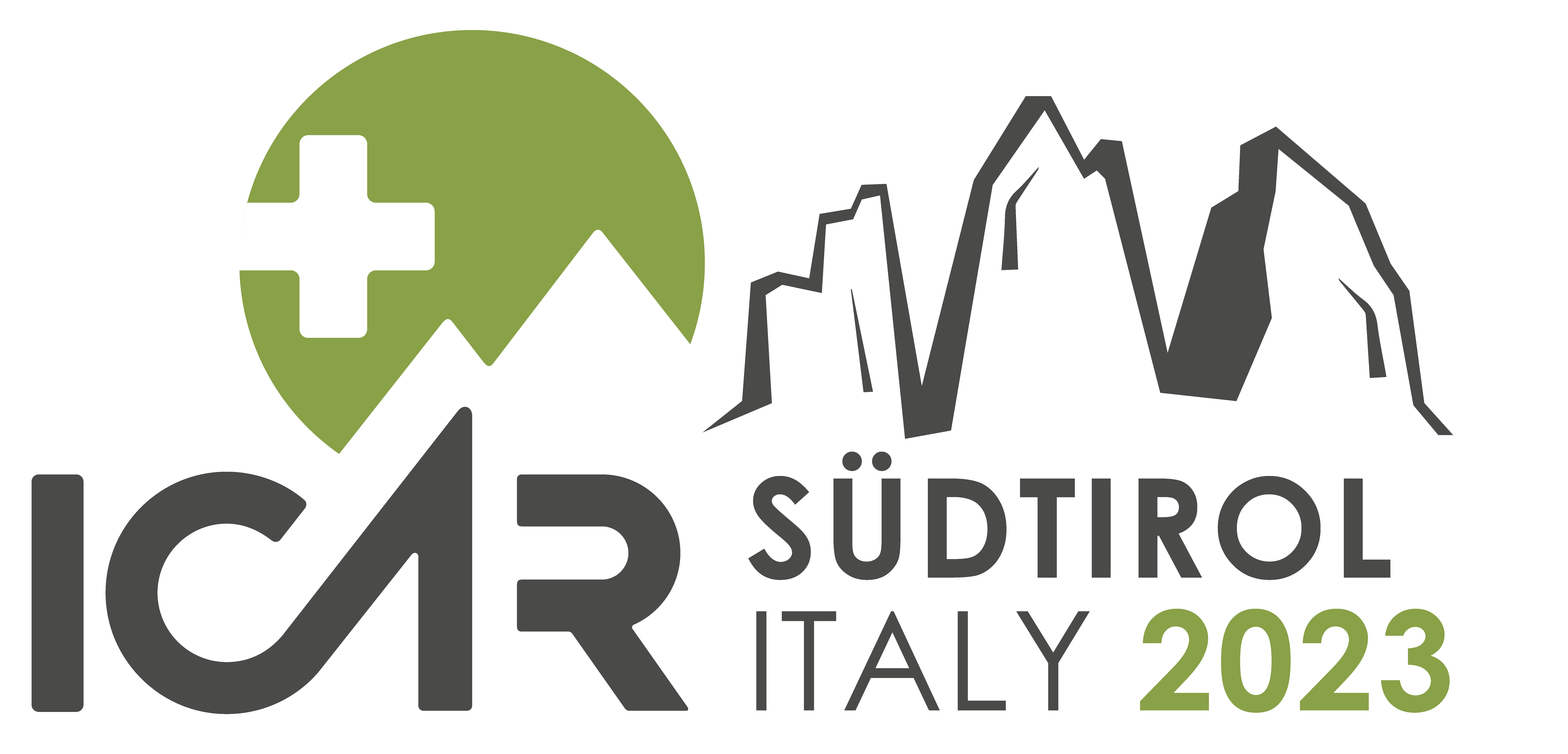The Three Peaks - Alpine history at your fingertips
Many historically significant climbing routes were first climbed on the steep faces of the South Tyrolean mountains, but nowhere is alpine history more evident than on the Three Peaks.
After the first ascent of the Cima Grande in 1869 by the Viennese Paul Grohmann, with the support of the local guide Franz Innerkofler and Peter Salcher, the best climbers in the world tried again and again on the Three Peaks. In the beginning, the easiest routes to the still unclimbed peaks were attempted and so the Cima Occidentale was first climbed in 1879 and the Cima piccola in 1881. In the following years, new standards of climbing were set again and again on the Three Peaks. In addition to routes such as the "Preuß-Crack" on the Cima Piccola in 1911, the north face of the Cima Grande in 1933 by Comici and the Dimai brothers up to the "line of the falling drop", the so-called Superdirettissima also on the Cima Grande by Kauschke, Siegert and Uhner in the winter of 1963, to name just a few, new and more difficult routes were constantly climbed.
It is rare to find so much alpine history assembled in one place as on the Three Peaks. The boldness and daring of the first climbers still amazes every climber even today.
Toblach (Dobiacco)
Toblach (Dobiacco) is considered the cultural center of the Holiday Region Three Peaks - Dolomites.
The village is located at the entrance to the romantic Landro Valley, the best starting point to discover the Dolomites, and is well known for its cultural and sporting events. With its 120 km of perfectly groomed trails, Dobiacco is considered the heart of cross-country skiing in the Dolomiti Nordic Ski Area. Other important events such as the Balloon Festival or the traditional gastronomic Christmas Market „Drei Zinnen Weihnacht“ also take place here.
Dobbiaco is also a natural and geological watershed between two Alpine worlds: to the south the Dolomites, white calcareous spires formed in the sea; to the north the Alps, with more docile iron rock peaks, rich in pastures and mountain huts. From the village you can access the San Silvestro Valley, with ist magnificent view of all the Dolomites, this place is known also as the „Cinema oft he Dolomites“.
In summer, it becomes the ideal starting point for a variety of mountain hikes, climbing, cycling and mountain biking routes suitable for everyone and for all needs.
The strategic position in the centre of the valley is convenient for getting around by public transport, including the convenient train, which allows, in all seasons and in a short time, to reach the many ski lifts, the various centres in the valley and the various side valleys.
Toblach is famous for the Three Peaks, whose majestic walls can be admired from Landro - Vista Tre Cime, the symbol of the Dolomites UNESCO World Heritage, and of two crystalline lakes, the Dobbiaco and Landro. Perhaps this is also where the etymology of the name comes from (Duplago).
Dobbiaco: historic and contemporary, calm and energetic, snappy and sustainable!
Local public transport
Use the public transportation to visit the Val Pusteria and East Tyrol. Carefree you can discover the country and its people without using your own car.
The South Tyrolean transport association includes municipal busses, urban busses and Citybusses; regional trains, the Ferrovia della Val Venosta, the Ferrovia della Val Pusteria, the funicular to Passo Mendola, the tramway on Renon and also the cable cars of Colle, Renon, Verano, Meltina and Maranza.
You can use all these possibilities of the local transportation to discover South Tyrol and East Tyrol comfortably, fast and eco-friendly! The Ferrovia della Val Pusteria takes you to numerous sights like the fort of Fortezza, Plan de Corones or to the castle of Brunico.

Accessibility
All roads and means lead here.

Arrival by train
From Germany, Switzerland and Austria South Tyrol can be reached using the German railway (DB), Swiss Railway (SBB) and Austrian Railway (ÖBB), together with the South Tyrolean and Italian railways.
Travel to Franzensfeste / Fortezza using international rail links. Then change to a local railway to Innichen / San Candido. Trains stop in Niederdorf / Villabassa, Toblach / Dobbiaco, Innichen / San Candido and Vierschach / Versciaco - Helm / Monte Elmo. From Klagenfurt travel to Innichen / San Candido via Lienz and then with the Val Pusteria railway to Vierschach / Versciaco - Helm / Monte Elmo, Toblach / Dobbiaco and Niederdorf / Villabassa. Sexten / Sesto and the Pragsertal / Valle di Braies can be easily reached using local buses from Innichen / San Candido and Niederdorf / Villabassa.

Arrival by car
On the Brennero Motorway A22 (toll road) take exit Brixen / Bressanone – Val Pusteria, then continue on the national road (SS49-E66) to the holiday region 3 Zinnen in the Dolomites. Distance from motorway exit Brixen / Bressanone – Val Pusteria: approx. 60 km.
Please note: All Italian motorways are toll roads, Austrian motorways can only be used with a toll sticker (Vignette).
Information on the Brennero motorway A22: International tel. 0043 512 4020, in Italy tel. 800 279 940
You can also get to us via Lienz in East Tyrol (A), by crossing the Austrian-Italian border on national road (B100-E66). Travel from Southern Germany via the Felbertauernstraße road. Advantage: no toll stickers (Vignettes) required
Road conditions and traffic information centre Bolzano / Bozen: phone +39 0471 200198

Arrival by plane/Airport shuttle
The South Tyrolean airport Bolzano Dolomites is situated in the country’s capital of Bolzano / Bozen.
There are several daily Shuttle buses to South Tyrol from the airports of Innsbruck, Salzburg, Munich, Treviso, Venice, Verona, Bergamo and Milan Malpensa.
Local mobility - enjoy a holiday without a car!
Mobilcard South Tyrol: The Mobilcard offers you free travel on all public transport of the South Tyrolean transport network (regional trains, city trains, regional and city buses, and the cable cars of the “Verkehrsverbund” transport network ). The card is valid for 1, 3 or 7 days: more information
Museummobil Card: The Museummobil card offers free entry to 80 museums and the same free mobility as the Mobilcard. The card is valid for 3 or 7 days: more information
Bikemobil Card: The Bikemobil card allows you the unrestricted use of public transport facilities in the whole of South Tyrol for 1, 3 or 7 consecutive days (not valid for ÖBB trains). On one day of your choice you can also use a hired bicycle

Euregio Cultural Center Gustav Mahler
Former one of the most-modern hotels in Europe it accommodates today a modern Culture and Congress Center, a youth hostel, the Nature Park House, a music school, the Alta Pusteria Valley Youth Service, a center for higher education, council flats and a holiday home of the Episcopate Welfare Organisation. The center of the house is the large “Gustav Mahler Hall” with 460 seats and excellent acoustics, dedicated to the famous Bohemian composer.

 We use cookies
We use cookies